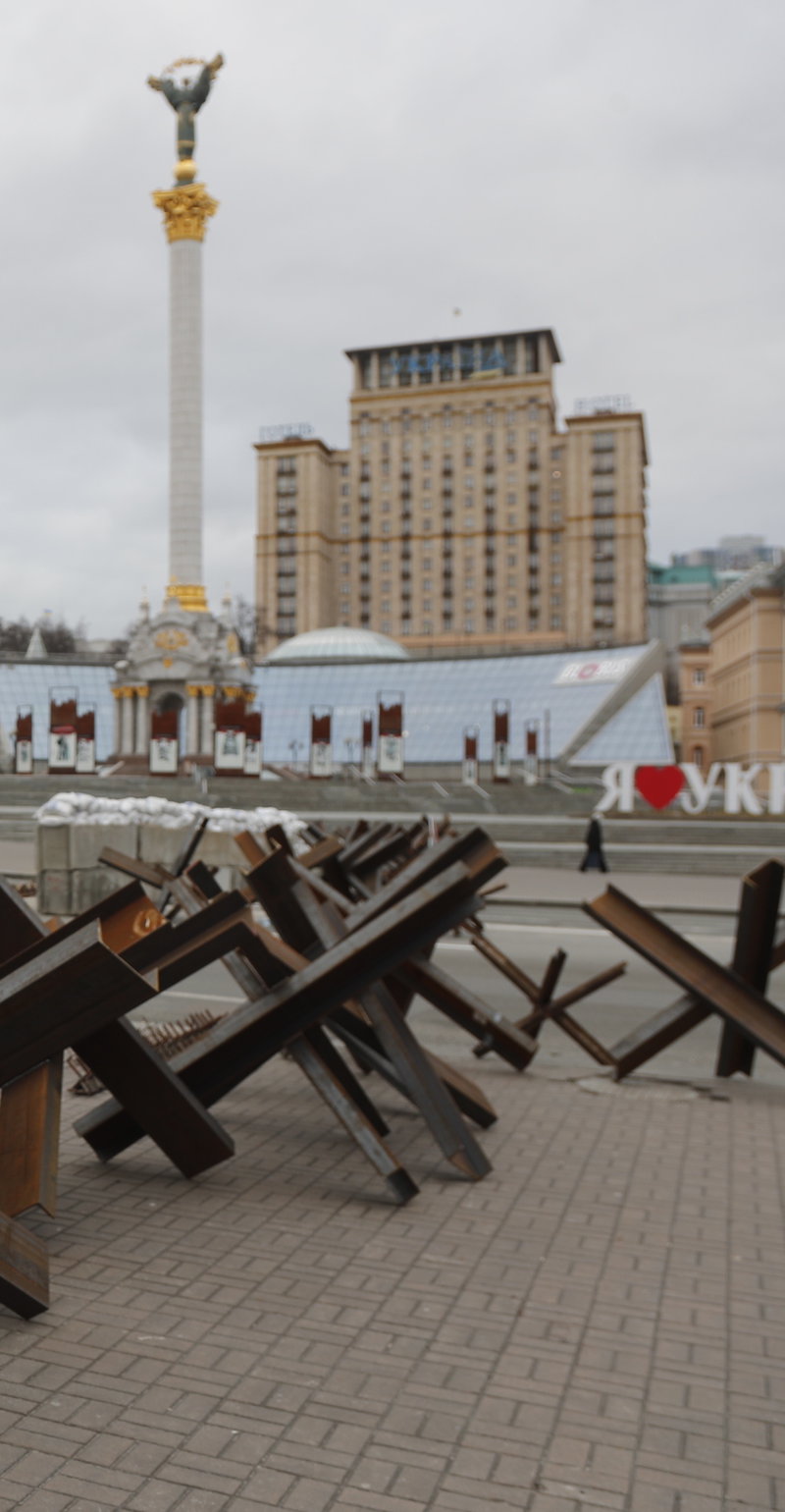Long-term resident
THE BEAUTIFUL CITY
On the road from Kyiv’s airport to the heart of the city, which I visited in 2016, I first saw thick snow-covered forest stretching for uncountable kilometres on both sides, then glimpses of the enormously wide (and 2,200 kilometre long) Dnieper river, followed by a view of the golden-domed monastery of Saint Michael. The city itself was surrounded by recent, sleek high-rise blocks, the city centre was full of elegant nineteenth-century buildings with all the usual brands of hotels and shops, and some Ukrainian ones, at their feet. On my first night I took the metro, its several escalators leading deep into the ground, to get to the Babi Yar ravine, now in a built-up area, in which 33,771 Jews were shot to death on 29-30 September, 1941, when the city was occupied by Hitler’s forces. I met up the following evening with a Ukrainian friend of a Barcelonan one at Maidan Square’s Freedom Monument (inside which some giggling teenagers in leather jackets were sheltering for a smoke) and we went to a local restaurant where we ate local food and drank local (and delicious) wine. Among other things, we talked about the far right in Ukraine, which was much in the news as some of them were then fighting in the Donbas with a sinister militia called the Azov Battalion. My guide snorted, and told me they had virtually no political representation and were so stupid that they held their meetings at the foot of the huge statue of a woman holding up a torch that stands next to the war museum, both statue and museum being symbols of the Ukrainian fight against Nazi Germany. Duh. On the way back he pointed out Kyiv’s first hipster bar. The next day we visited the Holodomor Museum, which keeps alive the memory of the three million plus Ukrainians who starved to death when Stalin ordered his NKVD to confiscate seven million tons of grain to make up for shortfalls elsewhere in the USSR: the names of the dead are kept in dozens of leather bound books and documentary footage from the time (1932-33) shows people dying in the streets and armed guards standing outside the granaries. When my friend asked the staff if they had a DVD about this enforced famine, I noticed he was speaking in Russian, and that they were replying in the same language. Kyiv, after all, is a friction-free bilingual city, like many others in Ukraine (later he proudly showed me a statue of Taras Shevchenko, a major 19th-century Ukrainian language poet).
As I write this, Kyiv’s residential districts are being pounded by Russian missiles. The monument dedicated to the Nazi atrocities at Babi Yar has been blasted to bits. The deep metro stations have become crowded shelters. The Azov Battalion, thankfully, no longer exists as such, having been retrained, screened and vetted and incorporated into the regular National Guard, as a unit specialising in reconnaissance and explosive disposal. (There is also an anarchist battalion, possibly following in the footsteps of the 1920s anarchist Nestor Makhno and his army, which once controlled large swathes of Ukraine). In other parts of the country, the situation is far worse than in Kyiv, with constant bombardments, thousands – as yet uncounted precisely – of dead civilians, refugees being shelled and shot at as they try to walk or drive to safety, Russian soldiers throwing grenades and firing at unarmed civilians as they enter the smaller towns and villages. And in the west, Catalonia included, there is the usual flock of useful idiots, who blame NATO or the US (how original) for what is the worst outbreak of military crime in Europe since World War Two, instead of pointing the finger at the obvious perpetrator, whose very invasion of a peaceful country is a war crime in itself, let alone the innumerable ones being committed with every day that passes (Putin, by the way, isn’t bothered by either NATO or the US, who let him dismember Georgia, Moldavia, and bits of Ukraine without batting an eyelid, but is bothered, or even mentally disturbed, by a paranoid vision of the loss of Russian influence in the former Soviet Republics).
Walking around Kyiv in 2016, I felt sure that this beautiful, dynamic place would be the next to join the pantheon of European cities which have become popular and much-visited after being little-known for years, like Barcelona and Prague. Maybe, when Putin is finally sitting in the dock and the builders and restorers have done their work, Kyiv will be just that.


